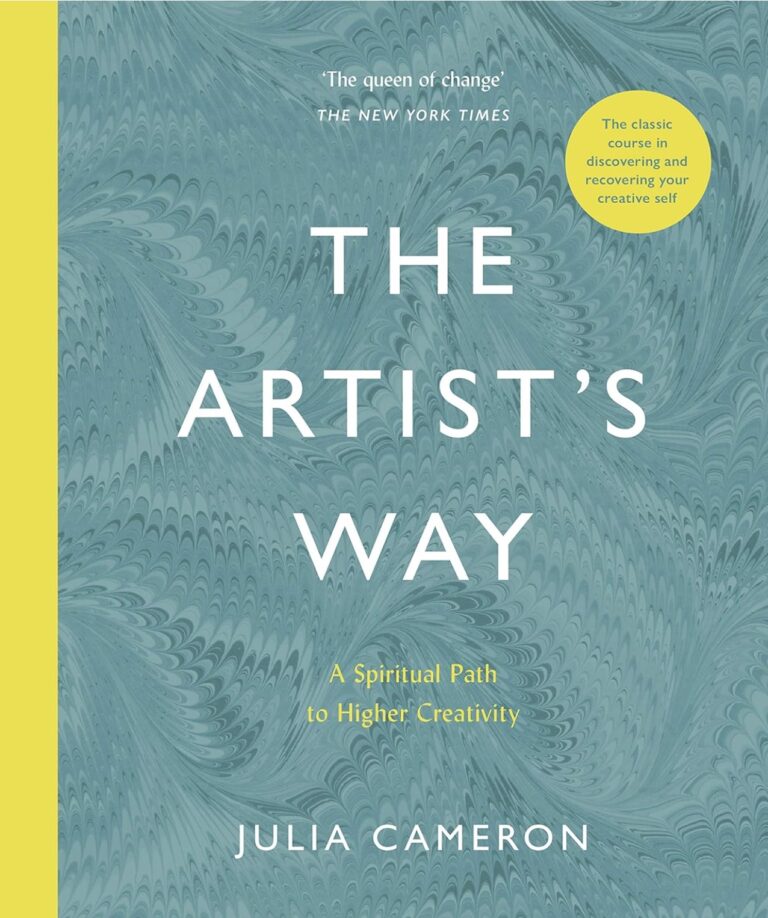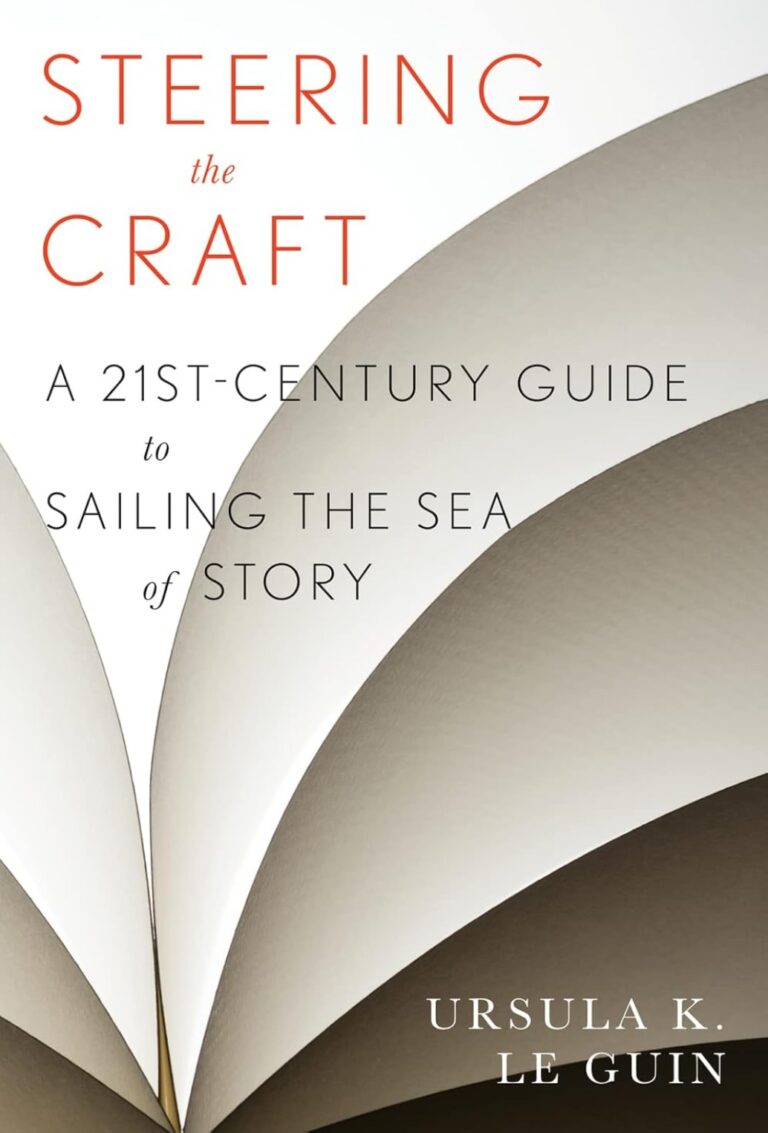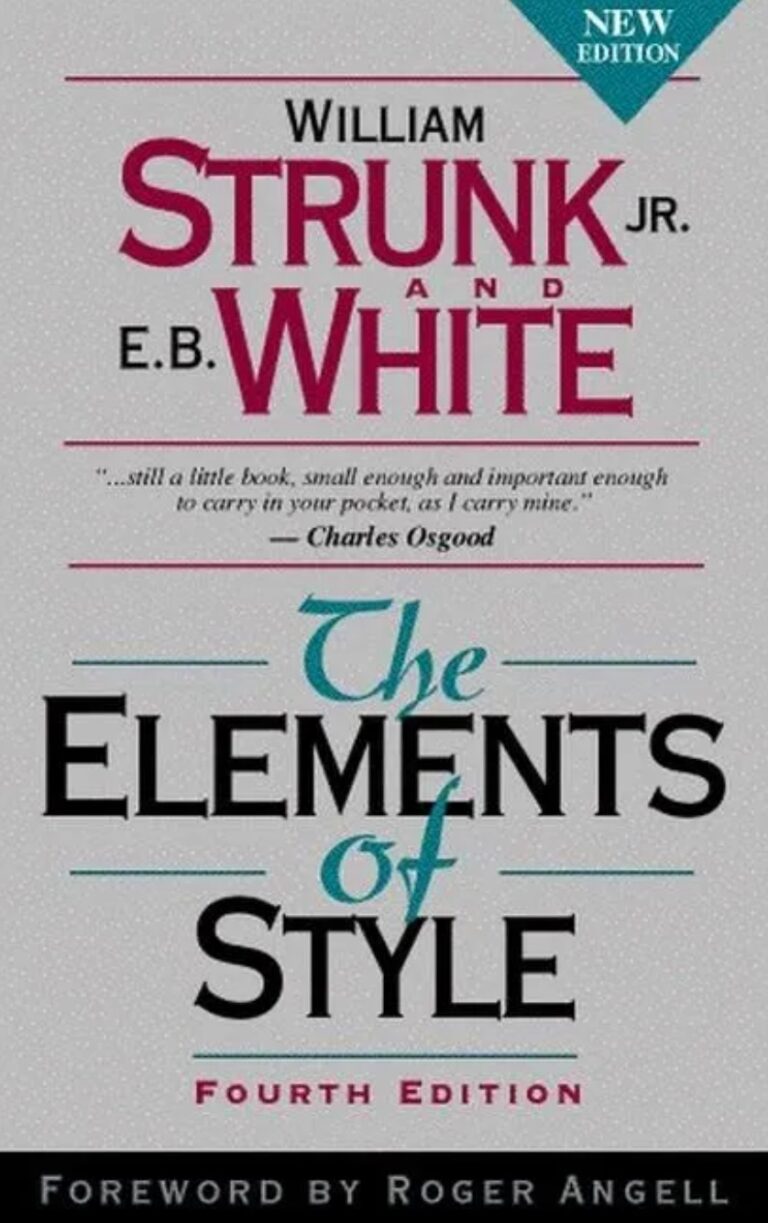The War of Art by Steven Pressfield is an essential guide for creatives battling procrastination, self-doubt, and fear. Pressfield introduces the concept of “Resistance,” the internal force that prevents us from fulfilling our creative potential, and offers practical advice for overcoming it.
With a focus on discipline and professionalism, The War of Art challenges readers to treat their creative work as a serious commitment, helping them break through mental barriers and achieve their goals.
Table of Contents
ToggleIntroduction
Overview of the Book
The War of Art by Steven Pressfield is a widely acclaimed guide that delves into the psychological and emotional obstacles that creatives face. It focuses on overcoming what Pressfield calls “Resistance”—the force that prevents us from doing our best work and realizing our full potential.
First published in 2002, The War of Art quickly became a must-read for writers, artists, and entrepreneurs alike who struggle with procrastination, fear, and self-doubt.
Rather than providing a traditional step-by-step approach to creativity, Pressfield offers a series of philosophical insights, framed as a battle against internal opposition.
The book is divided into three parts: the first identifies and defines Resistance, the second explores how to overcome it through discipline and professionalism, and the third discusses the more spiritual aspect of creativity and how to unlock it.
For anyone battling creative blocks, The War of Art offers a deeply personal and thought-provoking guide.
Why This Book is Important for Writers
What makes The War of Art unique is its focus on the emotional and psychological barriers to creativity. While many books focus on the technical aspects of writing or producing art, Pressfield zeroes in on the internal battles that prevent creatives from starting—or finishing—their work.
His no-nonsense approach to conquering these mental blocks resonates with anyone struggling to take their work from concept to completion. The book is particularly helpful for writers facing procrastination, fear of failure, or the pursuit of perfectionism.
It challenges creatives to view their work as a daily practice, rather than waiting for inspiration to strike.
Author Background
About the Author
Steven Pressfield is a novelist, screenwriter, and nonfiction author best known for his historical fiction novels like Gates of Fire and The Legend of Bagger Vance. Pressfield’s own struggles with Resistance inform the content of The War of Art.
Before finding success as a writer, Pressfield faced years of rejection and self-doubt, and his experiences deeply shape the insights he shares in the book.
In addition to his creative writing, Pressfield has become a thought leader in the realm of creativity, productivity, and overcoming personal obstacles. His books following The War of Art, including Turning Pro and Do the Work, expand on the themes of discipline, professionalism, and creative success.
Relevance of the Author’s Experience to the Book
Pressfield’s personal journey through years of creative struggle lends immense credibility to his advice in The War of Art. His candid discussions about the failures, doubts, and inner conflicts he experienced provide a sense of authenticity that resonates with readers facing similar challenges.
Pressfield doesn’t sugarcoat the difficulties of creative work; rather, he acknowledges them as universal struggles and presents the discipline needed to overcome them. His success as both a novelist and a mentor to creatives makes The War of Art a powerful resource for artists of all kinds.
Book Structure and Style
Layout and Chapter Overview
The War of Art is structured in three parts. In Part One, “Resistance: Defining the Enemy,” Pressfield explores the nature of Resistance, the internal force that stops people from pursuing their creative goals.
He examines how Resistance manifests as procrastination, fear, rationalization, and self-doubt, presenting it as a powerful and insidious adversary that everyone must confront.
Part Two, “Combating Resistance: Turning Pro,” offers strategies for overcoming Resistance. Here, Pressfield introduces the concept of “turning pro,” a mindset shift that involves treating creative work like a professional commitment rather than a hobby or an occasional endeavor.
This section emphasizes the importance of discipline, routine, and perseverance.
In Part Three, “Beyond Resistance: The Higher Realm,” Pressfield delves into the more spiritual aspects of creativity. He discusses the idea of creative work as a calling or higher purpose, urging readers to view their craft as something greater than themselves.
This section is more philosophical, offering a deeper reflection on why we create and the role of inspiration in the creative process.
Writing Style and Tone
Pressfield’s tone throughout The War of Art is direct, urgent, and at times confrontational. His writing is concise and punchy, with short chapters that get straight to the point.
There is a sense of tough love in his approach; Pressfield does not coddle the reader but rather challenges them to take responsibility for their creative blocks. His tone is motivational yet realistic, and he doesn’t shy away from acknowledging how difficult the creative process can be.
Despite the tough love, Pressfield’s writing is deeply empathetic. He clearly understands the struggles faced by creatives and speaks to these challenges from his own personal experience.
His use of military metaphors (like “war” and “battles”) gives the book an energizing feel, encouraging readers to view their work as a mission they must undertake daily.
Key Takeaways for Aspiring Writers
Practical Advice and Techniques
The War of Art doesn’t offer traditional writing tips or techniques, but it provides practical advice for overcoming the psychological hurdles that often derail creative projects. One of the most valuable concepts from the book is the idea of “turning pro.”
Pressfield suggests that creatives should treat their art like a job: showing up every day, adhering to a schedule, and focusing on the work regardless of how they feel. By adopting a professional mindset, writers can move past the excuses and resistance that hold them back.
Pressfield also emphasizes the importance of perseverance. His advice is simple but powerful: start the work and keep going, even when it’s difficult. He urges writers to let go of perfectionism, embrace failure, and understand that the creative process is often a long and arduous journey.
This no-excuses approach pushes writers to take action rather than wait for the perfect moment or the right inspiration.
Theoretical Insights and Perspectives
While the book’s practical advice focuses on discipline and professionalism, Pressfield also offers deeper insights into the nature of creativity and Resistance. He describes Resistance as a universal force that manifests in every person’s life, whether they are artists, entrepreneurs, or athletes.
Pressfield’s perspective is that Resistance is strongest when we are closest to achieving our most important goals—an idea that encourages writers to recognize their creative struggles as a sign that they are on the right path.
Pressfield also touches on the idea of creative work as a spiritual endeavor. In the final section of the book, he discusses how inspiration comes from a higher realm, and how artists are conduits for ideas that come from outside themselves.
While this section is more abstract and philosophical, it serves as a reminder that creativity is about more than just producing work; it’s about fulfilling a higher purpose.
Strengths of the Book
Unique Features and Approaches
What sets The War of Art apart from other books on creativity is its focus on the psychological barriers to producing creative work. Rather than offering tips on craft, Pressfield zeroes in on the emotional and mental blocks that prevent writers from starting or finishing their projects.
His tough-love approach is refreshing, especially for writers who find themselves stuck in a cycle of procrastination, self-doubt, or perfectionism.
Another unique aspect of the book is Pressfield’s emphasis on the concept of “Resistance.” By giving a name to the internal force that holds us back, he helps writers externalize their struggles and approach them as an opponent to be conquered.
This approach encourages readers to view their creative challenges not as personal failings, but as universal experiences that can be overcome with discipline and dedication.
Applicable to Different Levels of Writers
The War of Art is applicable to writers at all stages of their career. For beginners, the book offers valuable insights into why it’s so difficult to start writing and provides a roadmap for pushing past those initial obstacles.
For more experienced writers, Pressfield’s advice on maintaining discipline and perseverance is a helpful reminder of the importance of staying focused, even after achieving some level of success.
The book’s advice is also relevant to writers across all genres and mediums. Whether you’re a novelist, screenwriter, or poet, the concepts of Resistance and turning pro can be applied to any creative endeavor.
Pressfield’s emphasis on routine and professionalism helps writers develop the habits necessary for sustained creative output.
Areas for Improvement
Potential Weaknesses or Gaps
While The War of Art is full of valuable insights, some readers may find the lack of specific, actionable steps frustrating. Pressfield’s advice is largely motivational and philosophical, rather than practical or technical.
Writers looking for concrete tips on improving their craft or developing specific writing skills may find that the book doesn’t offer enough guidance in these areas.
Another potential weakness is the book’s heavy reliance on military metaphors. While the “war” analogy is effective in conveying the seriousness of the creative struggle, it may not resonate with every reader.
Some creatives might prefer a more gentle or nurturing approach, rather than one that frames the creative process as a battle to be fought.
Audience Suitability
The book is best suited for writers and creatives who are struggling with motivation, discipline, or self-doubt. It’s particularly valuable for those who feel stuck in their projects or who have difficulty finishing what they start.
However, writers looking for detailed advice on writing techniques or story structure may not find this book as useful.
The War of Art is also well-suited for writers who are interested in the psychological and spiritual aspects of creativity.
Pressfield’s reflections on the nature of inspiration and the role of the artist will resonate with those who view their work as more than just a profession, but as a calling.
How This Book Compares to Other Writing Guides
Similar Books in the Genre
The War of Art is often compared to other motivational and philosophical books about creativity, such as Elizabeth Gilbert’s Big Magic: Creative Living Beyond Fear and Austin Kleon’s Steal Like an Artist. Like The War of Art, these books focus more on the emotional and psychological aspects of creativity rather than specific techniques or craft-related advice.
However, Big Magic has a more nurturing, spiritual tone, encouraging creatives to embrace curiosity and wonder, while The War of Art takes a tougher, no-excuses approach, urging readers to fight their internal battles with discipline and determination.
Additionally, The War of Art can be compared to Steven King’s On Writing, which also blends personal anecdotes with advice on overcoming the challenges of the writing life.
However, Pressfield’s book is less about the mechanics of writing and more about the mindset needed to face Resistance, making it a more philosophical read compared to King’s more technical and craft-oriented approach.
Compared to more traditional writing guides like Bird by Bird by Anne Lamott, The War of Art offers a much more confrontational approach to overcoming creative hurdles.
While Lamott advises embracing imperfection and self-compassion, Pressfield urges writers to combat their inner demons with a warrior-like mindset. Both books have their place, but The War of Art is especially suited to those who thrive on a more direct, hard-hitting approach to creativity.
Distinguishing Factors
What makes The War of Art stand out among other writing guides is its laser focus on internal obstacles—specifically, the concept of Resistance. By naming this internal force and framing it as an enemy to be defeated, Pressfield provides a unique way for writers to think about their creative struggles.
The book’s blend of philosophy, spirituality, and practical advice creates a unique mix that challenges readers to look inward and address the psychological blocks standing in the way of their work.
Additionally, Pressfield’s reliance on military metaphors and his tough-love tone distinguish him from other authors who address the creative process. For readers who prefer a more direct, motivational style, The War of Art stands out as a guide that doesn’t offer easy answers but instead demands accountability and hard work from its readers.
Real-World Application for Writers
How Writers Can Implement the Advice
Writers can begin implementing Pressfield’s advice immediately by adopting the mindset of a “professional.” This involves showing up to work every day, no matter how uninspired or unmotivated they may feel.
Pressfield’s focus on consistency and routine is perhaps the most actionable takeaway from the book, encouraging writers to treat their creative practice as they would a traditional job.
This involves setting a schedule, sticking to deadlines, and pushing past the Resistance that tries to derail the work.
Pressfield also advises writers to stop overthinking and start creating. By identifying Resistance whenever it arises—whether in the form of procrastination, fear, or self-doubt—writers can recognize it for what it is and push through it.
He encourages action over analysis, meaning writers should simply begin the work, even if they feel uncertain or unprepared. This no-nonsense approach can help writers break free from the mental blocks that keep them from starting or finishing projects.
Benefits of Following the Book’s Advice
Writers who follow Pressfield’s advice can expect to develop a more disciplined approach to their creative practice. By treating their writing like a professional commitment, they will likely see an increase in productivity and the ability to follow through on long-term projects.
The mindset shift from amateur to professional can help writers move past the fear and self-doubt that often accompany the creative process, allowing them to take more risks and embrace failure as part of the journey.
Additionally, by recognizing and confronting Resistance, writers can gain a greater sense of control over their creative output. Instead of being at the mercy of procrastination or perfectionism, they can develop strategies to overcome these obstacles, leading to a more consistent and fulfilling writing practice.
What Reviews Thought
Amazon Reviews
Amazon reviewers consistently praise The War of Art for its practical and motivational advice. Many readers find Pressfield’s no-excuses approach refreshing, especially when compared to more nurturing or lenient books on creativity.
Reviewers appreciate how the book names and externalizes Resistance, giving them a new framework for understanding and overcoming their creative struggles.
Some even mention that the book has helped them not only in their creative endeavors but in other areas of life where procrastination and self-doubt were holding them back.
That said, a few reviewers note that the book’s tough-love approach may not resonate with everyone. Some find Pressfield’s military metaphors and confrontational tone too harsh or aggressive, preferring a more compassionate approach to creativity.
Others feel that while the book is motivational, it doesn’t offer enough specific guidance for developing writing skills or craft.
Goodreads Reviewers
On Goodreads, The War of Art receives similar praise for its focus on mindset and discipline. Many readers highlight how the book helped them shift their perspective on creative work, treating it as a daily practice rather than waiting for inspiration to strike.
The concept of Resistance is frequently mentioned as a game-changer for readers who previously felt blocked or stuck in their creative projects.
However, some Goodreads reviewers echo the sentiment that the book’s advice is more motivational than practical. While Pressfield’s message is inspiring, a few readers feel that the book could have included more concrete strategies for overcoming Resistance beyond the general call for discipline and professionalism.
Additionally, some reviewers find the spiritual aspects of the book—such as the idea of divine inspiration—less appealing, especially for those looking for more grounded, actionable advice.
Conclusion
Summary of Key Insights
The War of Art by Steven Pressfield is a powerful and motivational guide to overcoming the internal struggles that prevent creatives from doing their best work.
By defining Resistance as the enemy of creativity, Pressfield offers a framework for recognizing and combating the psychological barriers that hold writers back.
His advice centers around discipline, routine, and adopting a professional mindset, encouraging writers to treat their work as a serious, daily practice rather than a hobby or side project.
Final Recommendation
For writers facing procrastination, self-doubt, or creative blocks, The War of Art offers a tough-love approach that can help them push through their internal barriers and get the work done.
Pressfield’s direct and motivational tone, combined with his emphasis on discipline and perseverance, makes this book a valuable resource for anyone who struggles with Resistance in their creative process.
While the book’s advice is more philosophical than technical, it provides a powerful mindset shift for writers looking to develop a more consistent and productive writing practice.
Whether you’re a beginner struggling to start your first project or an experienced writer looking to break free from a creative rut, The War of Art is an essential read that can help you win your inner creative battles.











